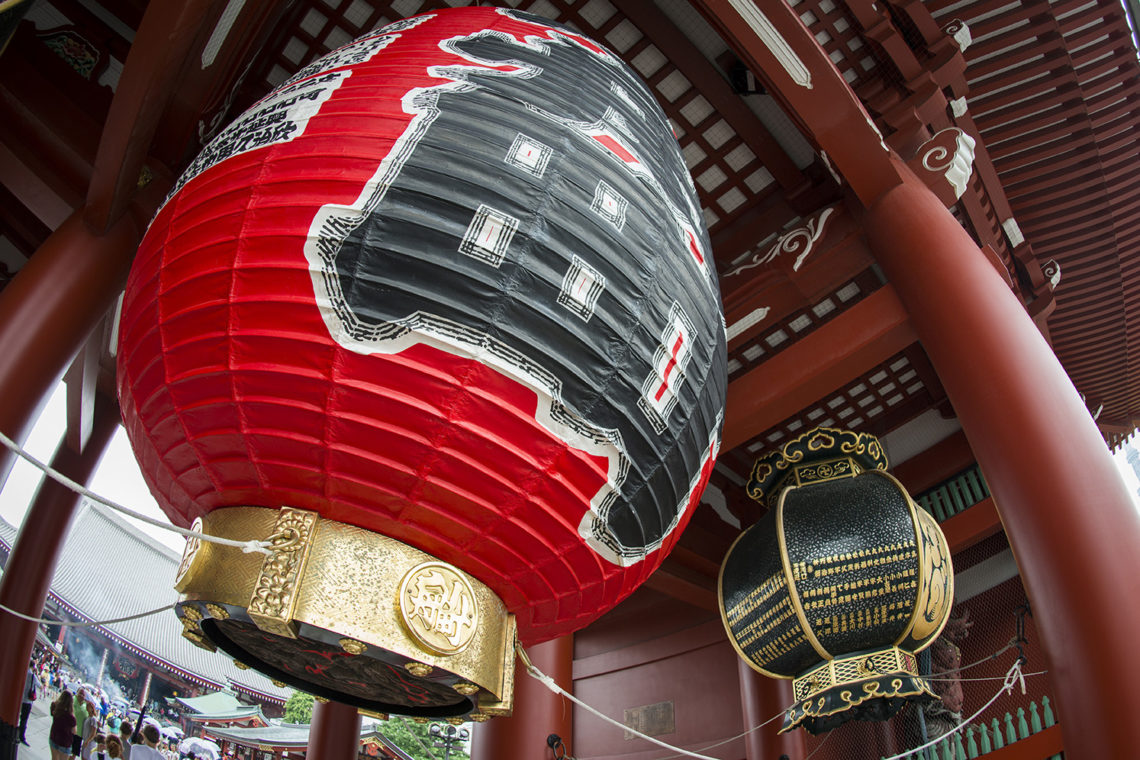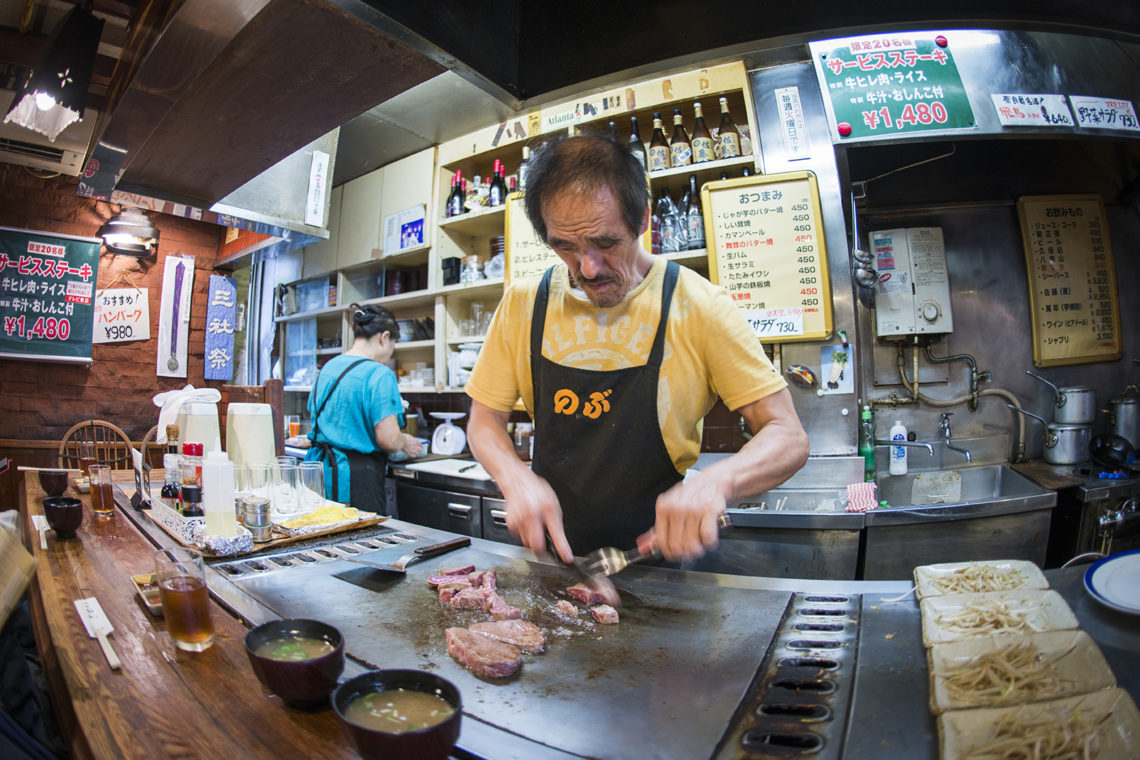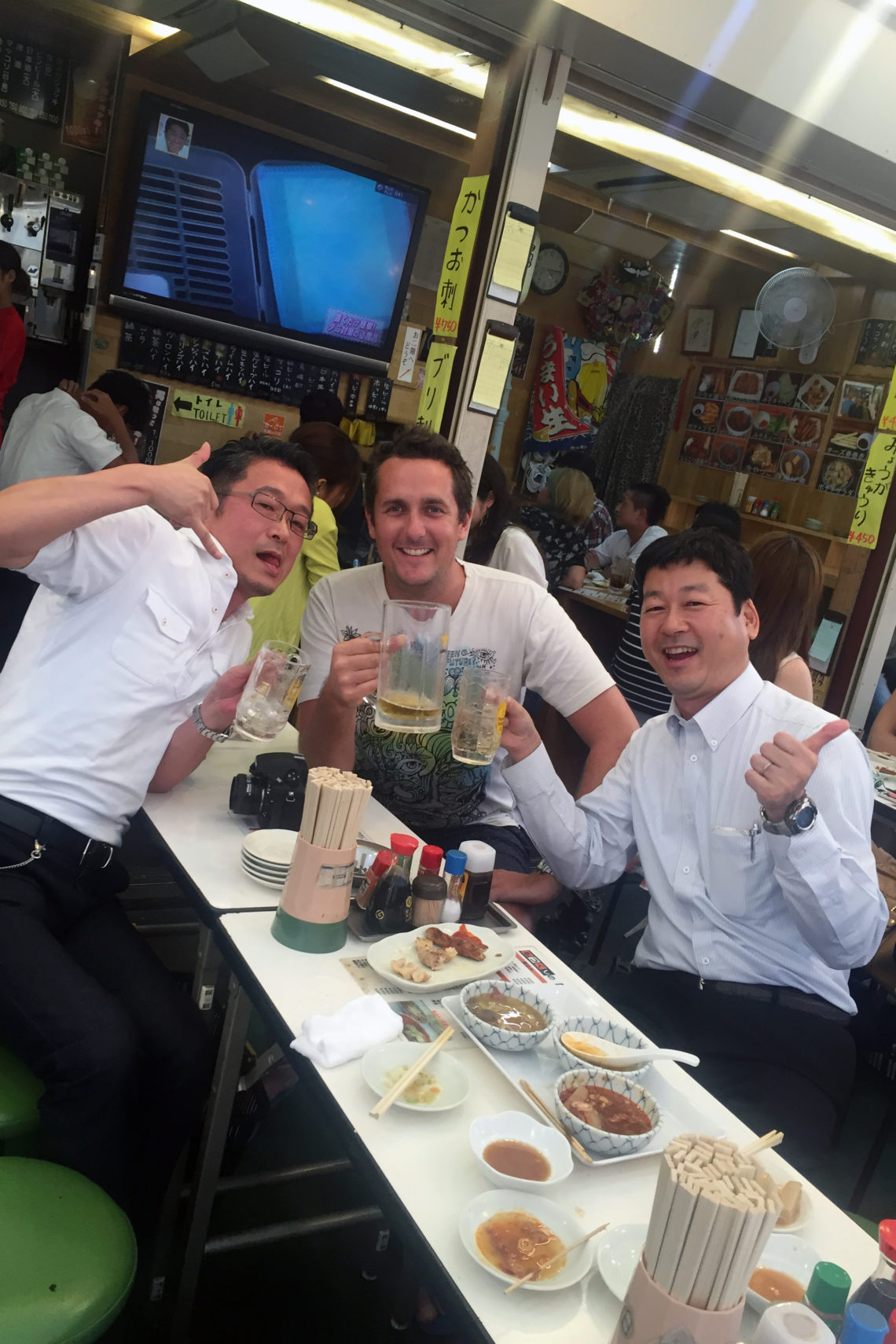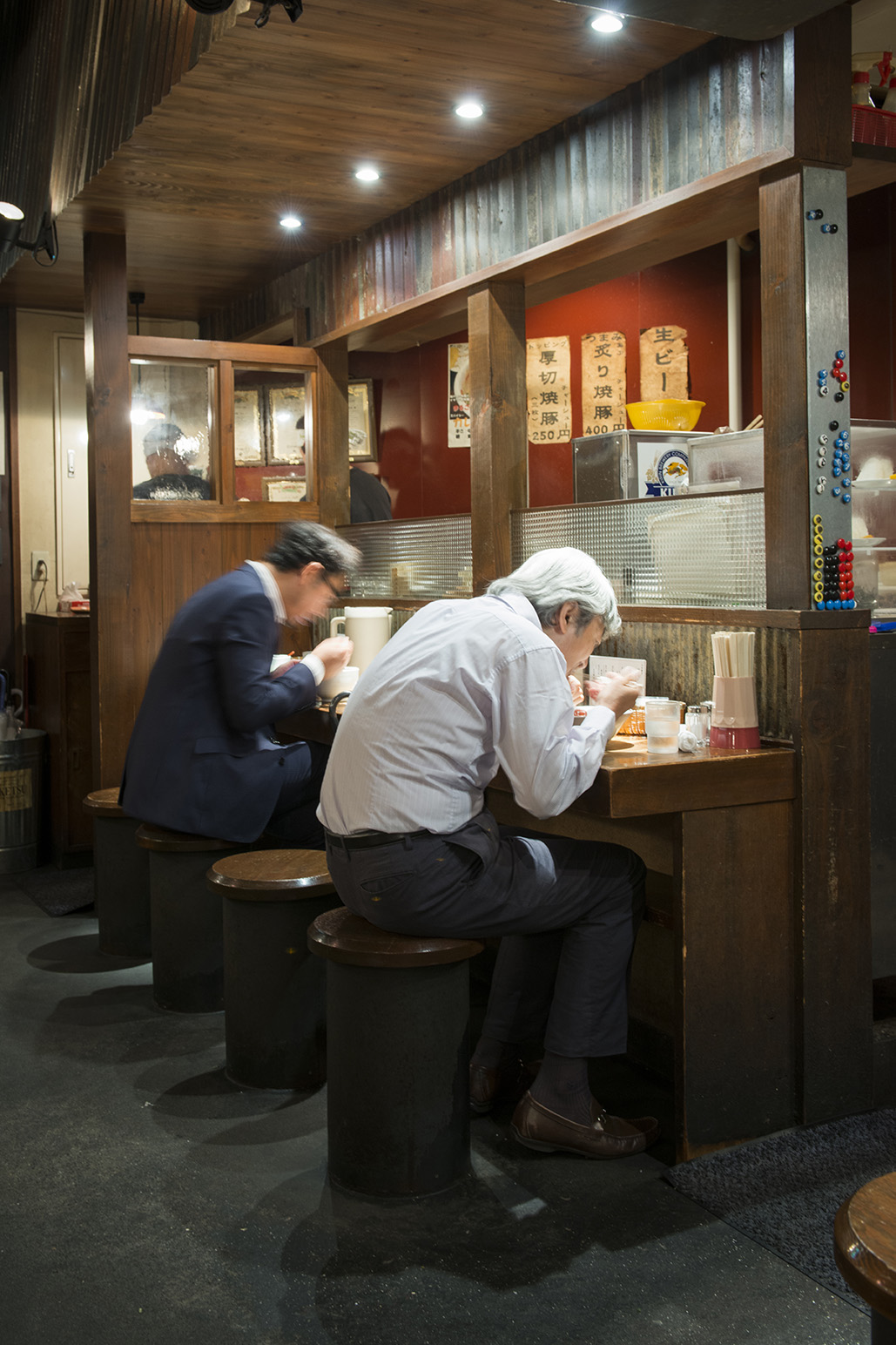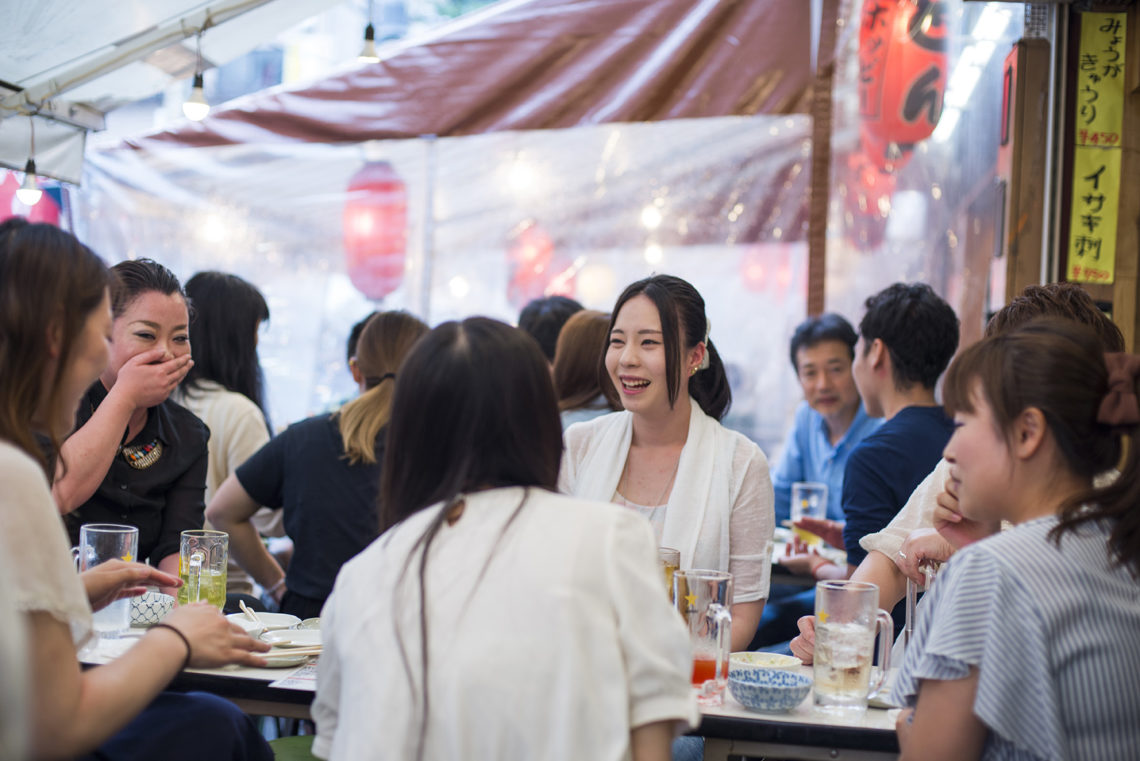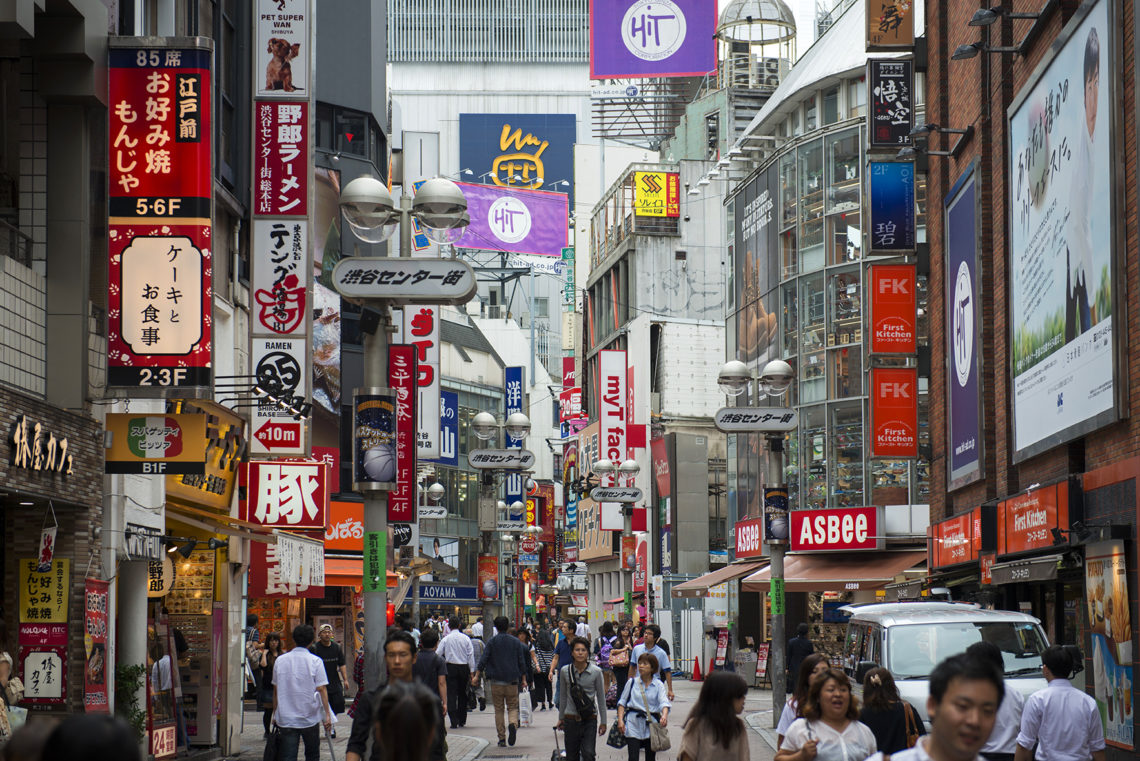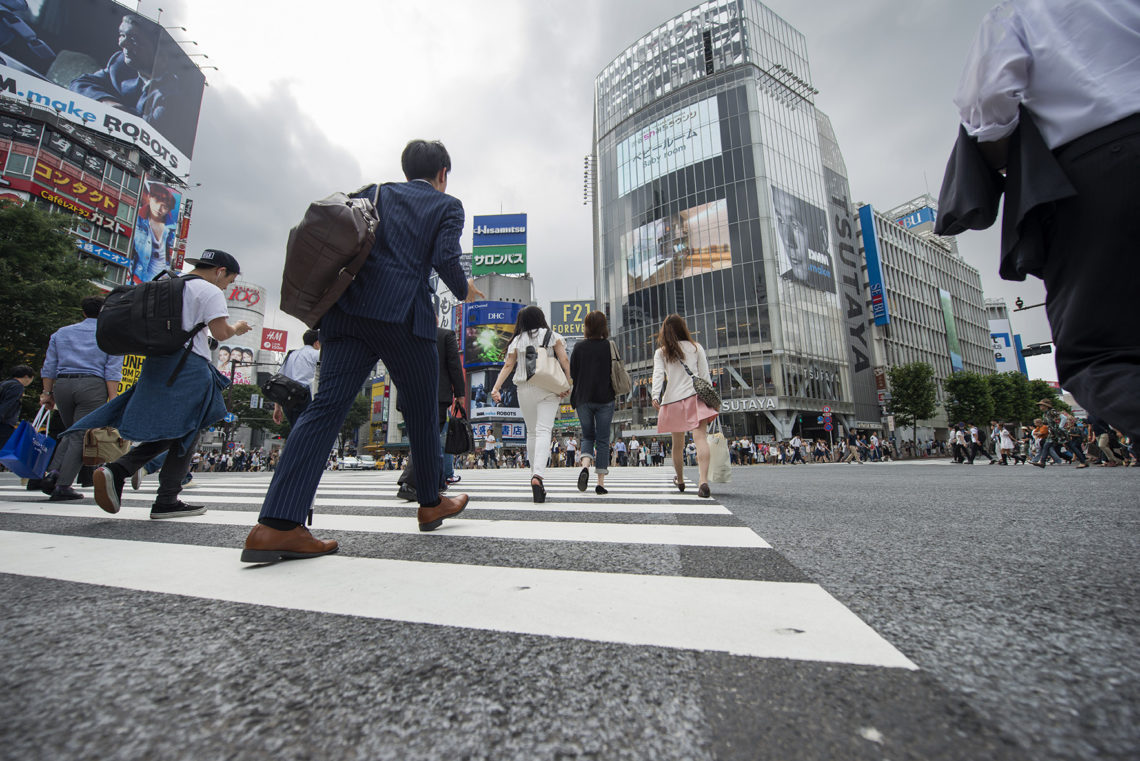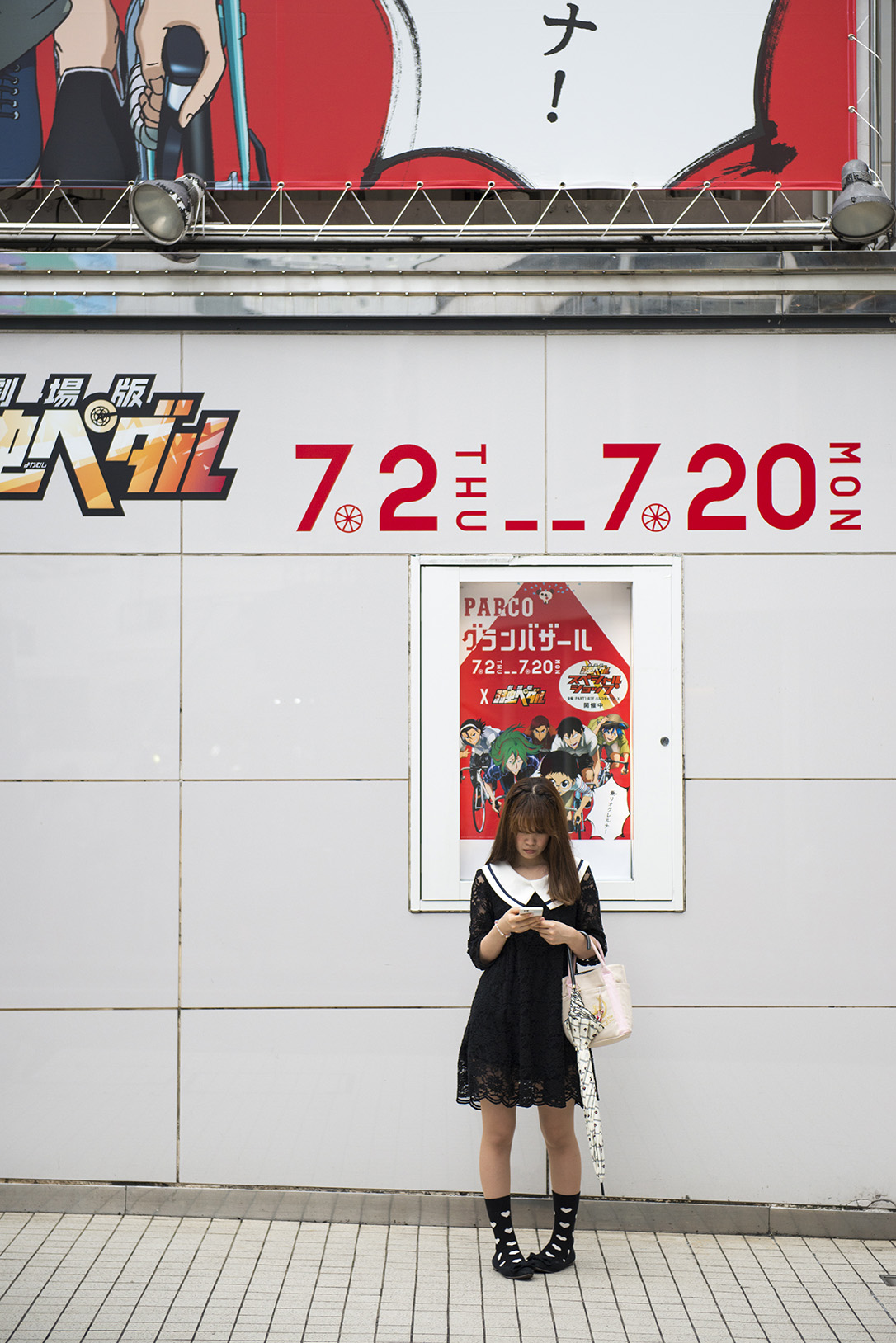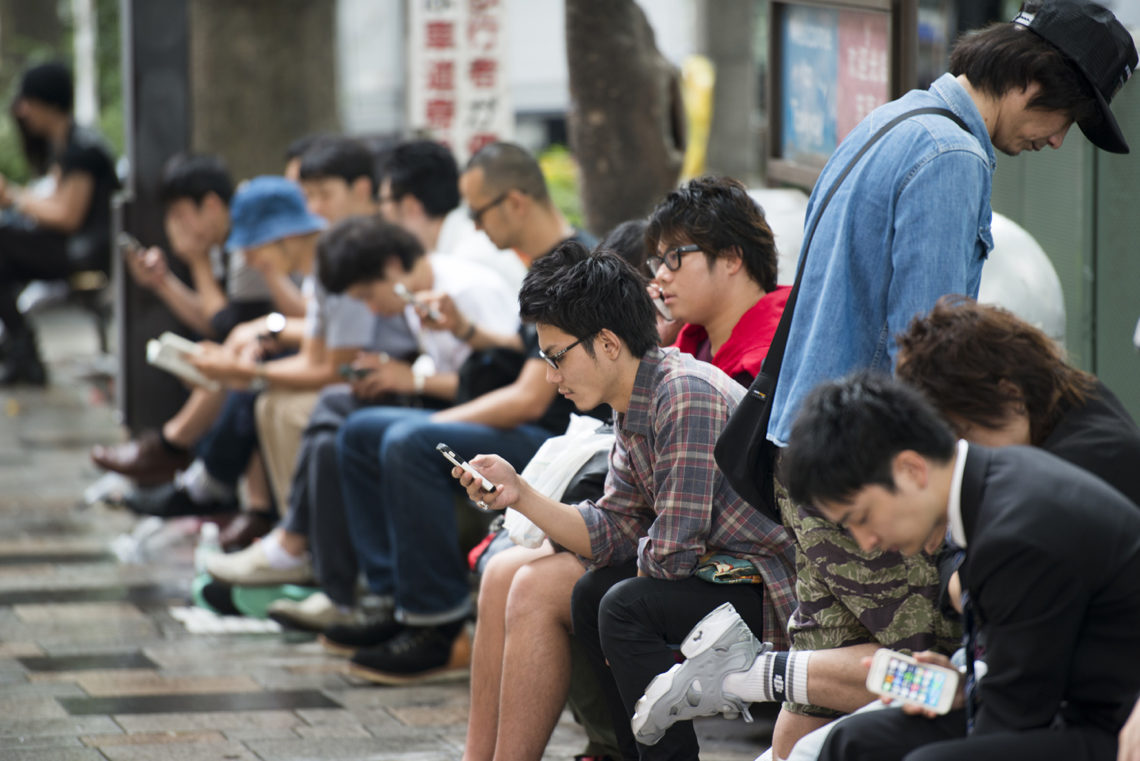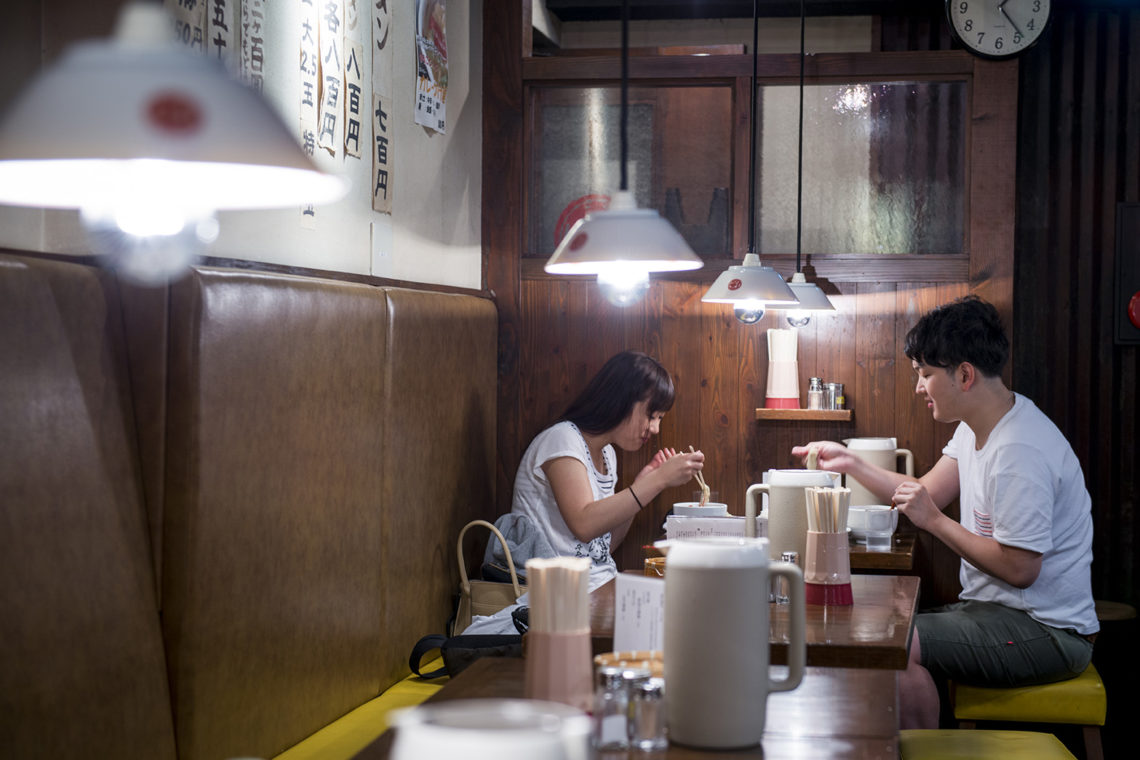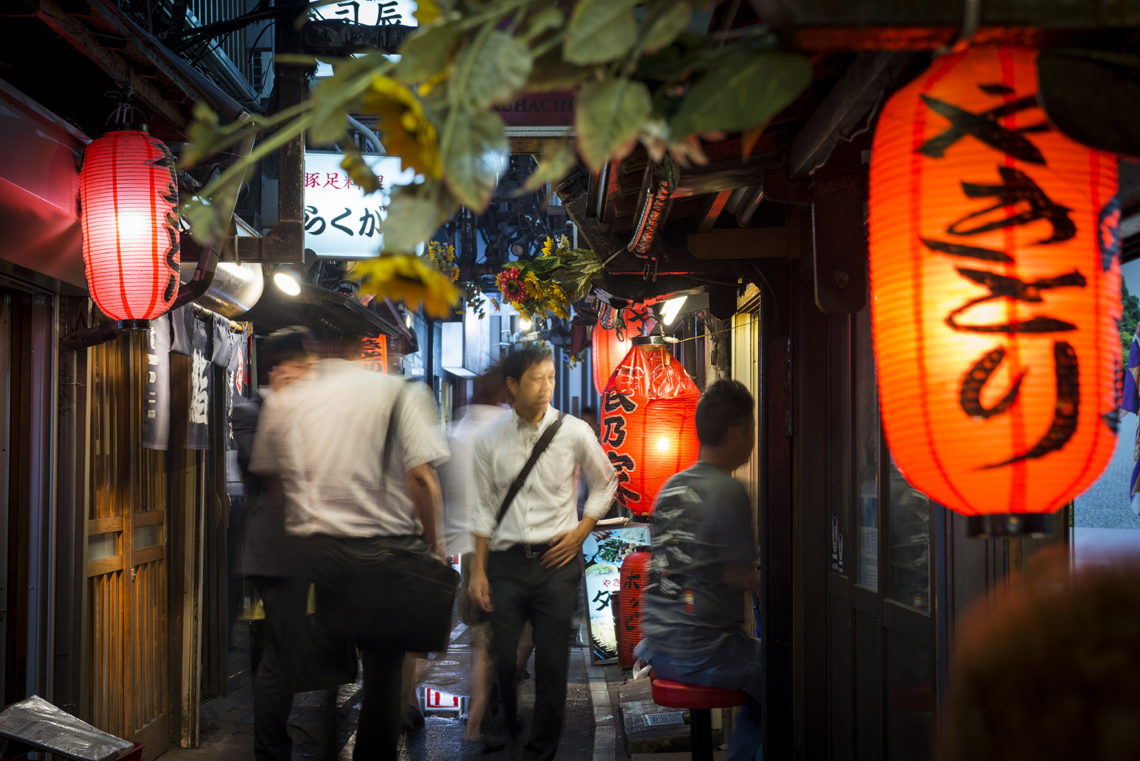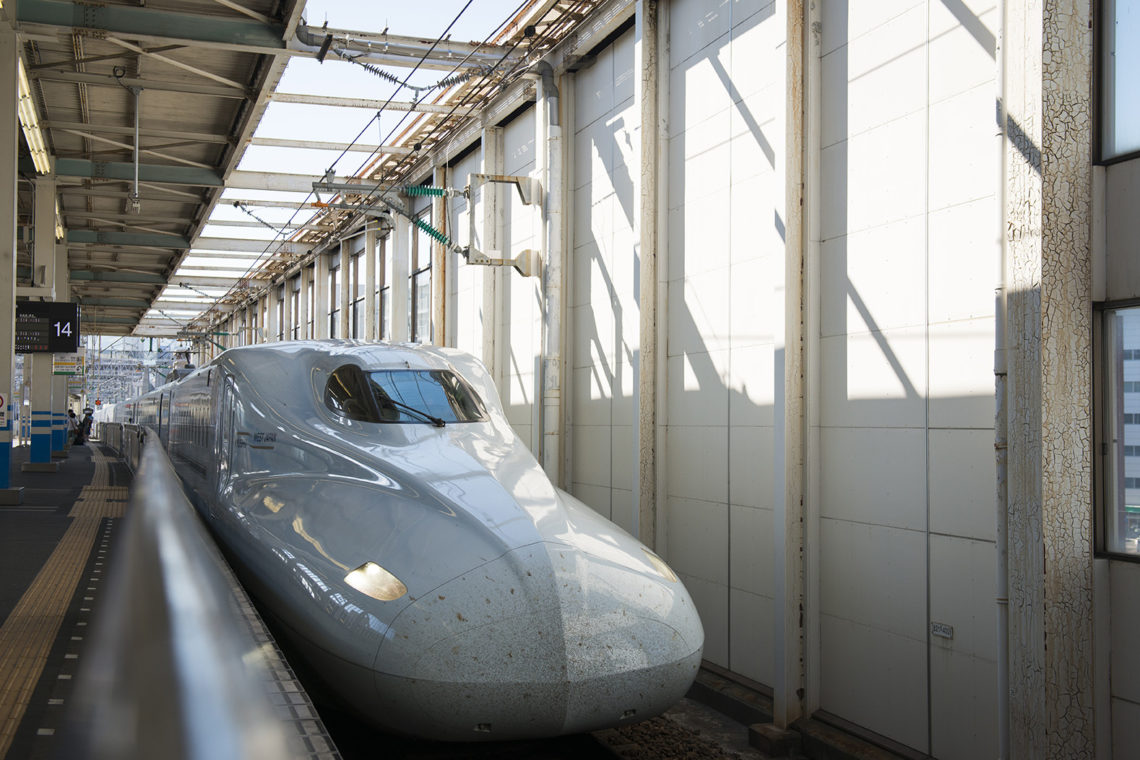“Look at him! He’s supposed to be at work!” Laughs my new bff Kei, pointing at his colleague across the road, frantically lying to his boss on the phone as to the whereabouts of his current location. It’s 3.30 on a drizzly Friday afternoon and I find myself boozing with the salarymen of Tokyo in the northern suburb of Asakusa, having more or less successfully navigated the noodle soup of metro lines across the city. It’s close enough to where I was aiming for (Akihabara – hey, they both start with an ‘A’) and I’ve spent a pleasant afternoon wandering around narrow streets lined with pretty old style Japanese shops and restaurants. I’d only just arrived at the impressive Edo-era Senso-ji Shrine – home Of Japan’s largest paper lantern, when the rain upped it’s game and forced me into a nearby street side Izakaya for a frosty beer and a few sticks of Yakiniku (satay). Thanks to the wonderfully communal nature of your average Japanese Izakaya, and no doubt buoyed by the prospect of slipping out of the office early for a few Friday drinks, Kei & Samu take up seats next to me and enthusiastically strike up a conversation over a plate of grilled octopus tentacles.
Friday afternoons in Tokyo positively buzz with energy, as the locals throw off the shackles of the weekly grind to let their hair down, and despite the weather, the cheery vibe in Asakusa is hard not to get swept up in. More than once I find myself grinning contentedly as I tend to do when travelling somewhere new and exciting. A round of whiskey & sodas brings our jovial late liquid lunch to a close, and the boys stagger off to a dinner meeting across town with a client. “Do you want to join us?” enthuses Kei, but I respectfully decline, instead retracing my route through the subway, back to my hotel in Shinagawa for an early night.
For the uninitiated like myself, the most striking thing about Japan is just how neat and tidy everything is. Streets are spotlessly clean, office buildings and apartment blocks are tastefully understated, and in the older areas, the charming wooden facades of buildings are so meticulously kept that you start to feel like you might have wandered into some kind of Japanese revival theme park. It’s also incredibly safe – so much so, that any drunken workers who may have missed their last train home can be spotted kipping on public benches the following morning, still in full white shirt & tie with briefcase parked neatly underneath.
Twelve hours after waving cheerio to Kei & Samu and I’m whizzing through the Nagoya countryside at breakneck speed – 270km per hour to be exact – en route to Kyoto aboard the Hikari Shinkansen (bullet train). Flawlessly clean, super efficient and a with a ride that’s smoother than a chauffer-driven limo, the Shinkansen is without doubt the best way to explore Japan’s central corridor of major cities, from Tokyo in the east, all the way through Osaka, Kobe and on to Hiroshima in the west.

